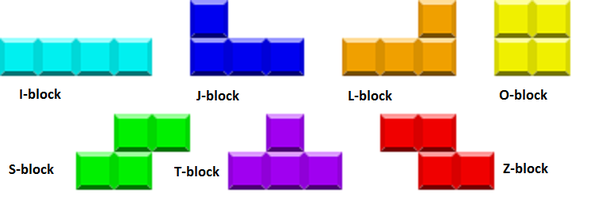Tetris game!, made with Python 🐍 and love ❤️.
-
It is recommended to create and activate a Python virtual environment
-
Install the requirements libraries with:
make requirements (mingw32-make requirements)
make run (mingw32-make run)- ↑ Turn the piece
- → Go right
- ← Go left
- ↓ Fall faster
We use ruff as a linter, to format the code.
You can run the check with:
make style (mingw32-make style)To run the Test Suite, you could run the next command:
make test (mingw32-make test)To see a Coverage Report, you could run the next command:
make coverage (mingw32-make coverage)Each block have an associated name, and is represented with a Class.
-
Function and Argument names should be lowercase, with words separated by underscores as necessary to improve readability (snake-case).
-
Max line length should be 120 characters, fix the lines that are longer than that.
-
Add type hints to the functions, see ref, this is a good way to document the code defining the parameters types and the return type.
-
Add docstrings to the functions, see ref, in order to document the code.
-
Reduce the use of global variables, and use the parameters or attributes instead. And if is really necessary to use global variables, define them in uppercase, and in the beginning of the file.
-
Create a main function, and move the code that is in the global scope to this function, and call it at the end of the file.
def main(): # Code here, instead of the global scope pass if __name__ == "__main__": main()
-
Instead of using block numbers to identify the different block shapes, you could create a class for each piece shape, that inherits from a base class. Something like:
class Block: # Base class for the blocks pass class BlockI(Block): # Class for the I block, with the specific methods for this block def start(self): pass def turn(self): pass class BlockJ(Block): # Class for the J block, with the specific methods for this block def start(self): pass def turn(self): pass
-
Create unit tests for the functions, see unittest, or the alternative pytest.
-
Reorganize the code in different files, for example, you could create a file for the utils functions, another for the Block classes, and another for the main function.
-
The DB management could be defined in a class, to encapsulate the logic.
-
The time tracking could be defined in a class, to encapsulate the logic.
-
Send to settings.py the configs constant variables, maybe like the screen size, the colors, etc.
-
Check the different rules for the linter, and add the ones that you consider necessary to the configuration file.
-
Subdivide the db_and_time.py file in two files, one for the DB management, and another for the time tracking.
-
Maybe a
Blockmust not inherit from aTetris, in order to decrease the dependency between those classes. -
Exist the Class
BackgroundBlockand the functioncolor_the_block, maybe those elements are related and is better to be together in the same class? The idea is relate the "same things", and unrelate the "things that are different". -
Maybe rename the
Blockclasses, to a little more representative name as:BlockO,BlockL, etc. Taking into account the different block type defined in #technical-details. -
Increase the code coverage of the test suite, you could run
make coverageand see which lines are not covered by the test suite:

This project is licensed under the MIT licence - see the LICENSE file for details.

